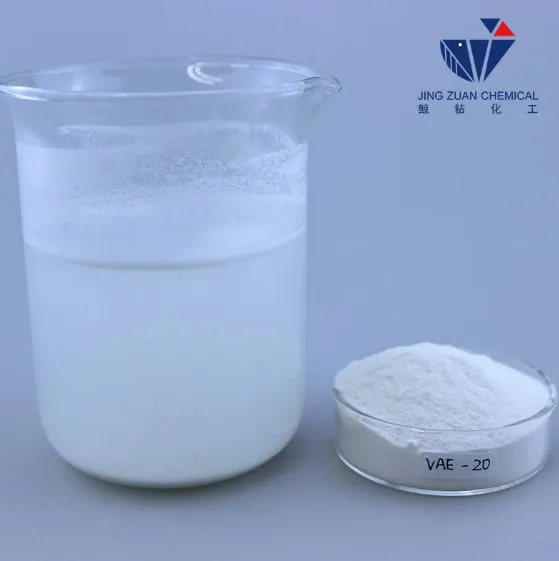
Juni . 19, 2025 15:01 Rudi kwenye orodha
Exploring Different Redispersible Polymer Powder
Redispersible polymer powders (RDPs) are essential additives in modern construction materials, offering enhanced flexibility, adhesion, and durability to cement-based products. As a leading manufacturer specializing in bulk production of high-performance RDPs, we understand the critical role these materials play in optimizing construction solutions. This article explores the redispersible polymer powder types, their applications, and how they elevate performance in cement mortars and other construction materials.

Redispersible Powder Uses
Redispersible polymer powders are versatile additives widely used to modify the properties of dry-mix mortars and other construction materials. When mixed with water, these powders re-emulsify, forming a polymer film that improves cohesion, workability, and resistance to external stressors. Key redispersible powder uses include:
-
Enhancing adhesion in tile adhesives and exterior insulation systems.
-
Improving flexural strength and crack resistance in self-leveling underlayments.
-
Increasing water retention in cement-based renders and plasters.
-
Providing freeze-thaw stability in exterior coatings.
These applications highlight how RDPs act as multifunctional modifiers, ensuring materials perform reliably under diverse environmental conditions.
The Application of RDP for Cement Mortar
Incorporating RDP for cement mortar significantly upgrades the mechanical and functional properties of traditional mixes. Cement mortars modified with RDP exhibit superior bond strength, reduced shrinkage, and enhanced durability. For instance:
-
Tile adhesivesbenefit from improved adhesion to substrates, even on challenging surfaces like smooth concrete or aged tiles.
-
Repair mortarsgain higher flexural strength, enabling them to withstand structural movements without cracking.
-
Waterproofing slurriesbecome more elastic and resistant to penetration, ideal for basements or wet areas.
Our RDP for cement mortar is engineered to meet rigorous industry standards, ensuring compatibility with Portland cement and other additives. By optimizing polymer-to-cement ratios, manufacturers can achieve tailored performance for specific applications, from high-traffic flooring to seismic-resistant structures.
Redispersible Polymer Powder Types
Understanding the different redispersible polymer powder types is crucial for selecting the right product for a project. The most common RDPs are categorized by their base polymers:
-
Vinyl Acetate Ethylene (VAE): Known for excellent adhesion and flexibility, VAE-based RDPs are ideal for tile adhesives and exterior plasters. They perform well in low-temperature conditions.
-
Vinyl Acetate/Versatate (VeoVa): These powders offer superior water resistance and alkali stability, making them suitable for waterproofing membranes and cementitious coatings.
-
Acrylic-Based RDPs: With outstanding UV resistance and weatherability, acrylic types are preferred for exterior finishes and decorative renders.
-
Styrene-Butadiene (SB): SB RDPs provide high tensile strength and impact resistance, often used in industrial flooring and repair mortars.
-
Each redispersible polymer powder typehas unique properties, allowing formulators to customize mixes for specific performance criteria. Our production facilities ensure consistent quality across all variants, supporting large-scale construction projects globally.
The Use of RDP for Construction
The use of RDP for construction has revolutionized modern building practices by addressing common challenges like brittleness, poor adhesion, and moisture sensitivity. Key construction applications include:
-
Exterior Insulation and Finish Systems (EIFS): RDPs improve the impact resistance and longevity of insulation layers.
-
Self-Leveling Compounds: These powders ensure smooth flow and rapid hardening without compromising strength.
-
Grouts and Joint Fillers: Enhanced cohesion prevents cracking in high-movement areas.
-
Decorative Finishes: RDPs enable vibrant, long-lasting textures and colors in architectural coatings.
-
Tile adhesive mortars: improving the bonding strength of the mortars.
By integrating RDP for construction, manufacturers produce materials that meet evolving demands for sustainability and resilience. Our bulk RDP solutions are designed to streamline supply chains, ensuring timely delivery for large infrastructure projects.
FAQs About Redispersible Polymer Powder
What are the primary benefits of using redispersible polymer powder?
Redispersible polymer powder enhance adhesion, flexibility, and water retention in cement-based materials. They also reduce shrinkage and improve durability, making them indispensable in modern construction.
Can RDP for cement mortar replace liquid polymers?
Yes, RDP for cement mortar offers easier handling and storage compared to liquid polymers. It ensures consistent performance in dry-mix formulations without compromising on key properties.
How do different redispersible polymer powder types affect curing time?
Most redispersible polymer powder types do not significantly delay curing. However, acrylic-based RDPs may slightly extend setting times due to their film-forming characteristics.
Is RDP for construction suitable for outdoor applications?
Absolutely. RDP for construction is formulated to withstand UV exposure, temperature fluctuations, and moisture, making it ideal for exterior coatings, renders, and insulation systems.
What is the shelf life of redispersible polymer powder?
When stored in cool, dry conditions, redispersible polymer powder typically have a shelf life of 6–12 months. Proper packaging ensures stability and prevents clumping.
From improving tile adhesives to enabling durable exterior finishes, redispersible polymer powder are transformative additives in construction chemistry. By leveraging different redispersible polymer powder types, manufacturers can tailor materials to meet precise performance requirements. As a trusted bulk supplier, we remain committed to delivering high-quality RDPs that empower builders to achieve superior results efficiently and sustainably. Explore our range to discover how these innovative powders can elevate your next project.
-
Versatile Hpmc Uses in Different Industries
HabariJun.19,2025
-
Redispersible Powder's Role in Enhancing Durability of Construction Products
HabariJun.19,2025
-
Hydroxyethyl Cellulose Applications Driving Green Industrial Processes
HabariJun.19,2025
-
Exploring Different Redispersible Polymer Powder
HabariJun.19,2025
-
Choosing the Right Mortar Bonding Agent
HabariJun.19,2025
-
Applications and Significance of China Hpmc in Modern Industries
HabariJun.19,2025







